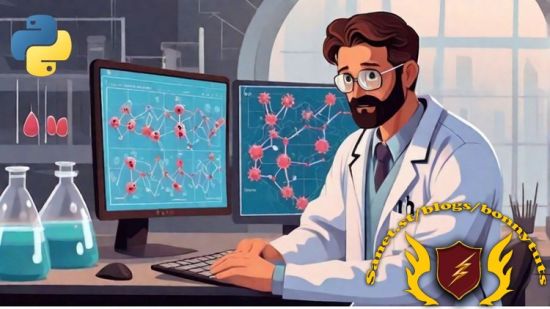
Published 10/2023
Created by Christ Raharja
MP4 | Video: h264, 1280×720 | Audio: AAC, 44.1 KHz, 2 Ch
Genre: eLearning | Language: English | Duration: 22 Lectures ( 3h 7m ) | Size: 1.23 GB
Forecast infectious disease rate, build epidemiological modelling, and map the spread of infectious disease with heatmap
What you’ll learn
Learn the basic fundamentals of biostatistics and infectious disease analysis
Learn how to find correlation between population and disease rate
Learn how to analyze infected patient demographics
Learn how to map infectious disease per county using heatmap
Learn how to analyze infectious disease yearly trend
Learn how to perform confidence interval analysis
Learn how to forecast infectious disease rate using time series decomposition
Learn how to do epidemiological modeling using SIR model
Learn how to perform public health policy evaluation
Learn how to calculate infectious disease transmission rate using SIR model
Learn several factors that accelerate the spread of infectious disease, such as population density, herd immunity, and antigenic variation
Learn how to detect potential outliers using Z score method
Learn how to clean dataset by removing missing rows and duplicate values
Learn how to find and download datasets from Kaggle
Requirements
No previous experience in biostatistics is required
Basic knowledge in Python and statistics
Description
Welcome to Python for Biostatistics: Analyzing Infectious Diseases Data course. This is a comprehensive project-based course where you will learn step by step on how to perform complex analysis and visualization on infectious diseases datasets. This course is a perfect combination between biostatistics and Python, equipping you with the tools and techniques to tackle real-world challenges in public health. The course will be mainly concentrating on three major aspects, the first one is data analysis where you will explore the infectious diseases data from multiple perspectives, the second one is time series forecasting where you will be guided step by step on how to forecast the spread of infectious diseases using STL model, and the third one is public health policy where you will learn how to make a data driven public health policy based on epidemiological modeling. In the introduction session, you will learn the basic fundamentals of biostatistics, such as getting to know more about challenges that we commonly face when analyzing biostatistics data and statistical models that we will use, for instance STL which stands for seasonal trend decomposition. Then, you will continue by learning how to calculate infectious disease transmission using Kermack-McKendrick equation, this is a very important concept that you need to understand before getting into the coding session. Afterward, you will also learn several factors that can potentially accelerate the spread of infectious diseases, such as population density, healthcare accessibility, and antigenic variation. Once you have learnt all necessary information about biostatistics, we will start the project. Firstly, you will be guided step by step on how to set up Google Colab IDE. Not only that, you will also learn how to find and download infectious diseases dataset from Kaggle. Once, everything is ready, we will enter the main section of the course which is the project section The project will be consisted of three main parts, the first part is to conduct exploratory data analysis, the second part is to build forecasting model to predict the spread of the diseases in the future using time series model, meanwhile the third part is to perform epidemiological modelling and use the result to develop a public health policy to slow down the spread of the infectious disease.First of all, before getting into the course, we need to ask this question to ourselves: why should we learn biostatistics, particularly infectious diseases analysis? Well, there are many reasons why, firstly, if you are interested in working in the public health or healthcare industry, having biostatistics knowledge would be very beneficial and help you to level up your career. In addition to that, you will also learn a lot of valuable skill sets that can be implemented in other projects, for example, time series decomposition can be used to forecast stock, real estate, commodity, and cryptocurrency markets. Last but not least, this course will also train you to be a better public health policy maker as you will extensively learn how to make data driven decisions and take other external factors into consideration.Below are things that you can expect to learn from this course:Learn the basic fundamentals of biostatistics and infectious disease analysisLearn how to calculate infectious disease transmission rate using SIR modelLearn several factors that accelerate the spread of infectious disease, such as population density, herd immunity, and antigenic variationLearn how to find and download datasets from KaggleLearn how to clean dataset by removing missing rows and duplicate valuesLearn how to detect potential outliers using Z score methodLearn how to find correlation between population and disease rateLearn how to analyze infected patient demographicsLearn how to map infectious disease per county using heatmapLearn how to analyze infectious disease yearly trendLearn how to perform confidence interval analysisLearn how to forecast infectious disease rate using time series decomposition modelLearn how to do epidemiological modeling using SIR modelLearn how to perform public health policy evaluation
Password/解压密码www.tbtos.com
转载请注明:0daytown » Python for Biostatistics: Analyzing Infectious Diseases Data